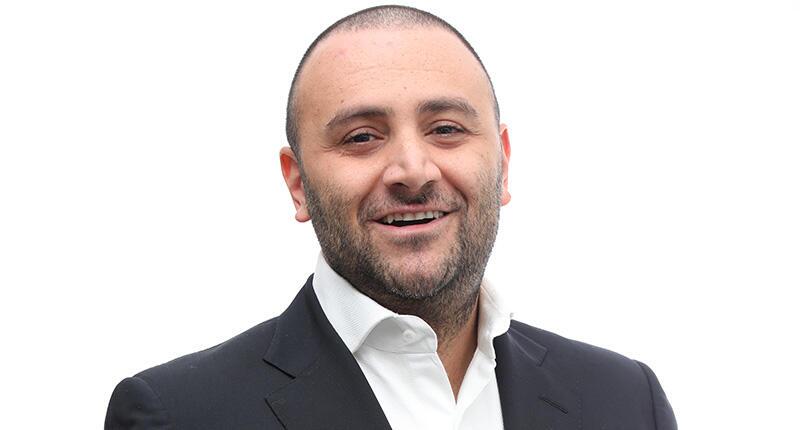Squirrel Spotting: Whiteboarding—A Love Affair
Peter Smith shares how a whiteboard can transform a team.

I’m not embarrassed to say that working remotely during COVID made life just a little less interesting, absent the entire wall of whiteboards that graced my office.
I meet fellow whiteboarding addicts from time to time and the discovery that there are more of us out there usually elicits knowing smiles and a mutual desire to investigate what about whiteboarding each of us finds most interesting.
At its core, whiteboarding can be a microcosm of who we are as leaders, managers, and influencers.
The benefits of comprehensive and inclusive whiteboarding touches on many of the central elements of business, and the effects of a great whiteboarding session can be transformative.
For starters, whiteboard sessions underscore two of my favorite mantras: “control the controllable” and “focus on the big rocks.”
Even the biggest whiteboard offers finite space, so the exercise demands a hierarchy of priorities. It mandates that we start with the “big rocks,” before descending through the less obvious, but occasionally informative, data points.
A second aspect of whiteboarding is the opportunity to lay out the facts in a very visual way.
To quote late U.S. Sen. Daniel Patrick Moynihan, “Everyone is entitled to his own opinion, but not to his own facts.”
Having the facts and data on the whiteboard provides both a hierarchy of importance and, one of the best deliverables of whiteboarding, an opportunity to make visual connections in a way that is not always apparent when pouring through digital data.
In Dr. A. K. Pradeep’s book, “The Buying Brain, Secrets for Selling to the Subconscious Mind,” he wrote: “Your brain collects data from the visual cortex, processing what each of your eyes are seeing, turning that information into three-dimensional, stereoscopic imagery and simultaneously matching that with data streams flooding forth from the auditory, olfactory, and tactile centers.”
Whiteboarding, quite literally, engages a different area of our brains and facilitates a processing of both the data and the aesthetics in a neurologically different way.
Neuroscience research, in fact, has shown that visual processing accounts for 50 percent of what our brain does at any given moment.
Whiteboarding is also a great team-building exercise. Having the right people (three to four is probably best) involved in the process facilitates a level of cognitive, emotional, and physical activity not typically present in PowerPoint presentations or other less collaborative exercises.
The act of having different people physically approach the board, make notes and suggestions, point out data points and connections, and ask probing questions is a fabulous way to engage a small team.
One of my favorite questions to ask the team while whiteboarding is, “If a year from now, this hasn’t worked, why might that be?” Or, better yet, “Tell me why this won’t work.”
The end result will always be better for challenging assumptions, and healthy debate should be strongly encouraged.
In Ray Dalio’s “Principles,” he wrote, “Thoughtful disagreement is not a battle; its goal is not to convince the other party that he or she is wrong, and you are right, but to find out what is true and what to do about it.
“It must also be nonhierarchical, because in an idea meritocracy communication doesn’t just flow unquestioned from the top down. Criticisms must also come from the bottom up.”
Inviting devil’s advocacy shows respect for your team. It says that you are not looking to be the smartest guy in the room. It is also a good way to challenge inherent biases, especially from the most senior people.
In “The Wisest One in the Room,” authors Thomas Gilovich and Lee Ross wrote, “It continues to be a wise practice to assign someone the role of devil’s advocate, but it is not as widely used as it needs to be.”
A culture that demands devil’s advocacy is also a great way to avoid groupthink, a particularly insidious practice when otherwise smart people align with bad decision-making, with potentially terrible consequences.
In the coming weeks and months, I look forward to consulting with vendors and retailers. I’m also excited about doing some in-store sales training based on my last book, “The Sales Minute.”
I’m looking forward to the variety of projects that working with different companies can bring but, mostly, I can’t wait to meet your whiteboard.
The Latest

The couple pleaded guilty to concealing at least $127 million in cash transactions at its precious metals businesses.

Consumers shared concerns about prices, inflation, tariffs, trade, and politics in the survey’s write-in response section.

In February 2026, the auction house will move its headquarters to the former Steinway Hall, a neoclassical landmark on Billionaires’ Row.

How Jewelers of America’s 20 Under 40 are leading to ensure a brighter future for the jewelry industry.

The new show will take place Jan. 23-25, 2026.


The former BHP Billiton leader and Gemfields chairman is remembered for his influential leadership throughout his 50-year mining career.

The LVMH-owned brand has partnered with the costume design union to revamp its award for 2026.

Roseco’s 704-page catalog showcases new lab-grown diamonds, findings, tools & more—available in print or interactive digital editions.

The luxury titan inked a deal to acquire an initial minority stake in the jewelry manufacturer with a pathway to full ownership by 2032.

The company’s curation of unsigned vintage and estate jewelry debuted at the Bloomingdale’s in Costa Mesa, California.

In the recent multi-shipment seizure, CBP also found counterfeit Audemars Piguet, Moncler, and Chrome Hearts items.

Helzberg’s Chief Retail Officer Mitch Maggart shared details about its tests of a new store concept rooted in an elevated luxury experience.

Jewelers of America execs and National Jeweler editors discuss tariffs, the sky-high gold price, and the engagement that broke the internet.

The luxury goods company said founder Ippolita Rostagno will remain at the brand’s helm.

Laura Burdese, who joined the Italian luxury brand in 2022, will take on the role in July.

The National Jeweler editors revisit the most noteworthy industry happenings and design trends from 2025.

Need a gift for the cat lover who has everything? Look no further than our latest Piece of the Week.

It purchased the “Grosse Pièce,” an ultra-complicated Audemars Piguet pocket watch from the ‘20s, for a record-breaking price at Sotheby’s.

The lab-grown diamond grower now offers custom engagement and fashion jewelry through its Kira Custom Lab Jewelry service.

Chandler got his start at Michelson Jewelers and has served as DCA president and CEO since 2001. He will retire at the end of the month.

The boutique is slated to open this week inside Terminal 8, offering pre-owned Rolex watches and more to international travelers.

Sponsored by Digital Monitoring Products

The special-edition egg pendant ingested in a New Zealand jewelry store was recovered after a six-day wait.

Associate Editor Natalie Francisco plays favorites with Piece of the Week, selecting a standout piece of jewelry from each month of 2025.

The “Love and Desire” campaign is inspired by the magic that follows when one’s heart leads the way, said the brand.

Two awardees will receive free tuition for an educational course at the Swiss lab, with flights and lodging included.

Berta de Pablos-Barbier will replace Alexander Lacik at the start of January, two months earlier than expected.





























